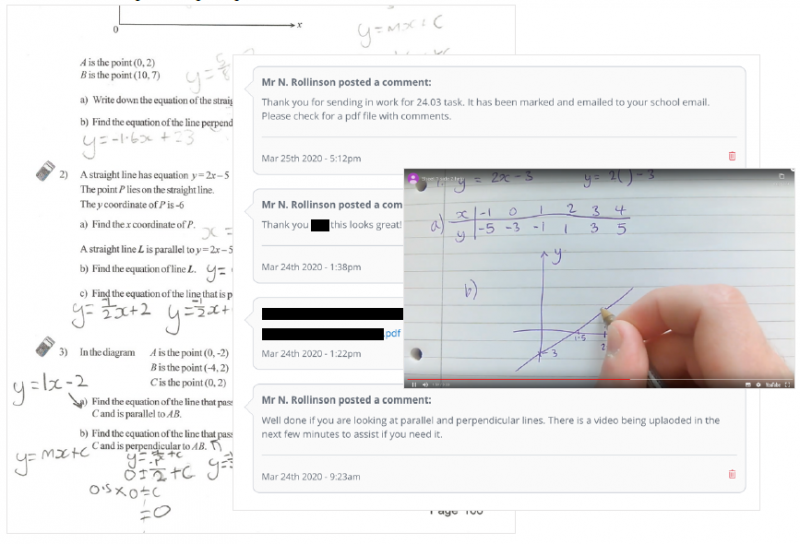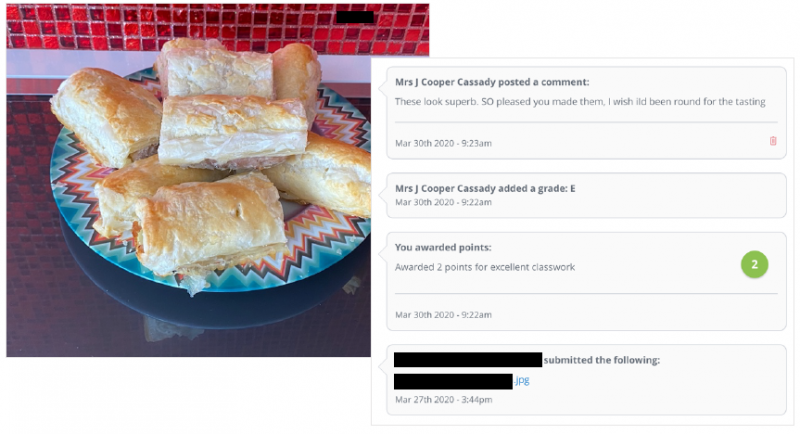In a recently published research paper entitled: ‘Schoolwork in lockdown: new evidence on the epidemic of educational poverty’, by Francis Green, Professor of Work and Education Economics, UCL Institute of Education, there is clear data rich evidence of the varied opportunities pupils nationally have been given to continue with their on-going education from home, via online platforms or virtual learning experiences.
The report suggests that the average amount of schoolwork being done at home, according to parents and family members, is 2.5 hours a day. This is significantly less than previous surveys and points to greater learning losses than had been suggested.
It adds that the majority of this ‘homework’ comprised assignments, worksheets and watching videos. On average, children were given two such pieces of homework a day.
The extent of online lessons provision in state schools was minimal in the first 4 weeks of school closure, with 71% of state school children receiving no or less than one daily online lesson. The marking of work submitted, feedback offered and the opportunities for follow up as well as on-going pastoral support are other areas where the provision for some has been woefully inadequate.
In an age of equality, it is a sad indictment of an education system which appears to have failed such a high percentage of its young people.
In comparison to this data, Hollygirt has made an exemplary provision. From Monday 23rd March, teaching staff of Years 1 – 11 have set work according to the normal school timetable via Satchel One, an online learning platform. EYFS staff communicate via Evidence Me, a platform already familiar to parents, and e-mail. Pupils have been assigned around 25 tasks to complete each week; the exact number varies according to timetable variations, optional tasks, etc.
The amount of live virtual lessons and pastoral support sessions increased from April onwards, including:
- 3-4 live sessions for each pupil each week via Microsoft Teams
- The opportunity to attend weekly subject clinics for 1:1 support (Senior School)
- Weekly form time
- Fortnightly tutor mentor session (Senior School)
- Transition sessions for Junior pupils and new external pupils
Microsoft Teams

It is no surprise that the independent sector has fared better. After all, parents are already bought in to the expectations of progress and attainment, of provision and support.
Our parents are supportive of the school and we know they will do everything possible to ensure learning continues at home. Most have been supportive of us in assisting and encouraging their children to engage. One look at the top quality work being produced, as evidenced on the Hollygirt social media pages, will demonstrate the continuity of practical work, of outstanding creative writing, of project and topic work , of work in every curriculum area that is still going on: inspired by the teachers, supported by the parents and created by the children.
It is a misnomer however, to suggest that all our pupils naturally engaged early on. We know that some children see home as a place of leisure and school as a place of work. But the vast majority have been encouraged and cajoled into engaging by their teachers, who have made at least weekly contact with each individual to offer support and to put plans in place to get them moving. 99.5% of pupils at Hollygirt in Years 1 to 11 have logged into Satchel One at least once during the period of closure.
All at the same time as the school has continued to provide services for the children of key workers, and have reintroduced 5 cohorts of children back into the classroom. We know for some families, sharing laptops with parents working from home, with patchy internet signals at times, with the technological gremlins we can all face while using online platforms like Microsoft Teams and Zoom, has made for some full engagement impossible. But most have worked with us and for most it has been successful.
It would not be prudent for me to suggest that there will not be educational losses over the close down period and potentially more so for those year groups who will not return to school until September. Also, we do not underestimate the challenge of reintegration to the social norms of school life, of its structure, hours, bells, rules as well as its work expectations. Children have become accustomed to new regimes, new habits and with the added anxiety of returning. With the potential damage done to mental health by their social isolation, we are working hard to produce a structured time for the beginning of term to get used to things including off-curricular team building and topic days. We will support our pupils with their social and emotional issues with sensitivity and care, as we have always done. Thereafter, individual by individual, subject by subject, we will assess the missing learning and seek to build back the skills required to ensure that all children can progress in their learning and make up for lost time.
Task with accompanying video explanation

Creating a learning dialogue

Practical task


